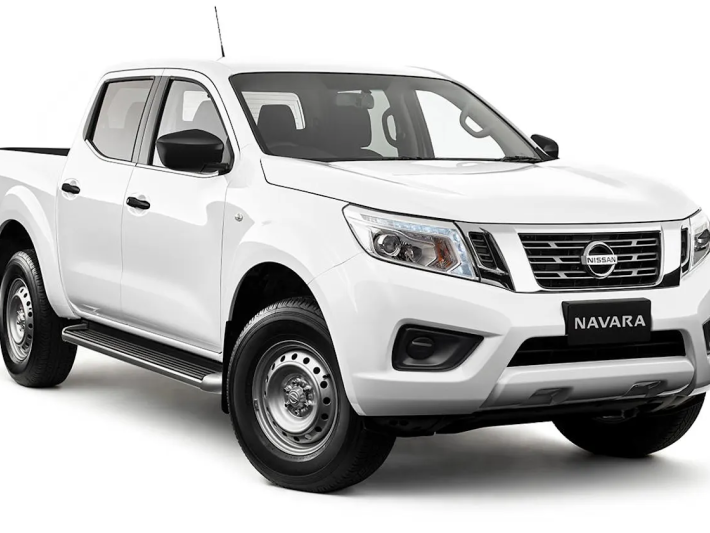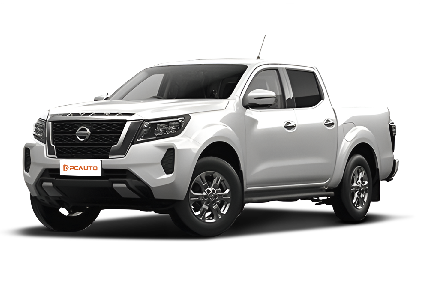Q
How long do brakes last on a 2021 Nissan Rogue?
The brake pads on a 2021 Nissan Rogue typically last between 40,000 to 70,000 kilometers, depending on driving habits and road conditions. In Malaysia's stop-and-go city traffic, this might drop to 30,000 to 50,000 km, while suburban use with more highway driving could push it closer to that upper limit. Brake rotors usually last two to three times longer than pads, around 80,000 to 150,000 km. It's a good idea to check your brake system thickness every 15,000 km, and you absolutely need to replace the pads when they're down to 3mm remaining or if you hear that telltale metal-on-metal grinding sound. With Malaysia's hot and rainy climate, keep a close eye on brake fluid moisture levels – swap out the DOT4 fluid every 2 years or 40,000 km to prevent boiling point drop. Hybrid models, thanks to regenerative braking, usually see 20-30% less pad wear than their gas-only counterparts. If your brake pedal feels soft, the car pulls to one side, or there's unusual vibration, get it checked immediately. Daily habits like avoiding harsh braking, reducing unnecessary weight, and regularly cleaning dust buildup in the wheels can really help extend brake life. The factory pads use a ceramic composite that holds up well in high heat and humidity, but if you do a lot of mountain driving, stepping up to high-performance pads might be worth considering.
Special Disclaimer: This content is published by users and does not represent the views or position of PCauto.
Related Q&A
Q
How to open a 2021 Nissan car without a key?
If you've lost or damaged the key fob for your 2021 Nissan, your first move should be to reach out to an authorized Nissan dealer or a professional locksmith. Modern cars come with electronic anti-theft systems, so trying to force the locks or messing with it yourself could wreck the vehicle or set off the security alarm. For models with the smart key system, you might be able to unlock it remotely using Nissan's official app, like NissanConnect, but only if you've registered and activated the service beforehand. In Malaysia, some third-party auto service companies offer professional key programming, but make sure to choose a reputable provider to ensure security. It's worth noting that most 2021 Nissan models use encrypted transmission technology, so traditional mechanical lock-picking might not work, and trying to take apart the door yourself could void your warranty. As a daily habit, keep your spare key somewhere safe or think about installing a GPS tracking system just in case. If your key does go missing, heading to the dealer to get a new one programmed and deactivating the old key's code is the safest fix.
Q
How do you start a 2021 Nissan with a dead key fob?
If your 2021 Nissan key fob is dead, you can still start the vehicle using these steps: First, locate the mechanical key inside the fob—it's usually hidden near the keyring. Press the release button to pull it out. Next, insert the mechanical key into the driver's door lock (on some models, the lock might be hidden under a small cover on the door handle that you'll need to gently pry off). Once you're inside, hold the dead key fob close to the start button (typically on the right side of the steering wheel or near the center console), then press the brake pedal and hit the start button to fire up the engine.
It's worth noting that the key detection area can vary by Nissan model—some have it below the start button, others in the center armrest storage bin—so checking your owner's manual for the exact spot is a good idea. To avoid this hassle, Malaysian owners should regularly check their key fob battery (usually a CR2032 coin cell). If you notice the remote range getting shorter or the indicator light dimming, replace the battery ASAP. Keeping a spare battery in the car is also a smart move.
While modern smart key systems are super convenient, that traditional mechanical key is still a crucial backup. Make sure you're familiar with how to use it—you never know when you might need it.
Q
How long will a 2021 Rogue last?
Under normal usage conditions in Malaysia, the 2021 Nissan Rogue can typically clock around 250,000 to 300,000 kilometers or last over 15 years with regular servicing and maintenance. Of course, the actual lifespan depends on factors like driving habits, road conditions, and how often you keep up with maintenance. It’s got a solid 2.5-liter four-cylinder engine and that Xtronic CVT transmission, with an overall mechanical setup that’s been refined for better durability. To make it last longer, Malaysian owners should pay extra attention to how the tropical climate affects the car – like checking the cooling and air-con systems every 6 months, using engine oil suited for high temperatures, and regularly cleaning the radiator to prevent overheating. Also, with Malaysia’s frequent rain and humidity, rustproofing the undercarriage and body is a must. As a globally popular SUV, Rogue has pretty good parts availability, which is a big plus for long-term ownership. It’s worth noting that any car’s lifespan hinges on sticking to the manufacturer’s recommended maintenance schedule – think timely transmission fluid changes and regular brake checks. For Malaysians looking at a used Rogue, focus on inspecting the CVT transmission’s performance and the condition of the undercarriage; these are key to how much life the vehicle has left.
Q
Can I remote start my 2021 Nissan Rogue?
The 2021 Nissan Rogue offers remote start functionality on some trims, depending on whether your vehicle is equipped with NissanConnect services and the corresponding smart key system. If you opted for the version with remote start when purchasing, you can fire up the car using a button combination on the factory key fob—usually pressing the lock button first, then holding down the remote start button—or through the NissanConnect mobile app. This is super handy in Malaysia's hot weather, letting you kick on the AC early to cool things down. Just keep in mind that remote start typically has a time limit (around 10-15 minutes), and the vehicle stays locked for security. For owners without the factory setup, you might consider adding an aftermarket remote start system to get similar features, but it's best to go with a professional shop to avoid messing with the original wiring or voiding your warranty. Different brands of remote start systems can have slightly different operation methods—like some requiring double-pressing the lock button before the start button—so it's a good idea to check your owner's manual for the exact steps. Also, when using the mobile app for remote start, make sure the vehicle is in an area with good network coverage, and this feature usually requires a subscription to keep using it.
Q
Why is my 2021 Nissan Rogue not blowing cold air?
Your 2021 Nissan Rogue's air conditioning not cooling could be due to several common issues. First, check if the refrigerant is low – that's the most common problem with AC systems. A refrigerant leak or lack of regular replenishment will reduce cooling performance, so it's best to have a professional shop run a pressure test and top it up. Next, it might be a faulty AC compressor. The compressor is the heart of the cooling system; if you hear strange noises or it won't start at all, you'll need to get it repaired or replaced ASAP. Additionally, a clogged condenser or a malfunctioning cooling fan can also affect cooling, especially in Malaysia's hot weather where these problems tend to get worse faster. Regularly cleaning the condenser and checking the fan's electrical connections can help prevent this. Finally, don't rule out a dirty cabin air filter restricting airflow. It's a good idea to replace the filter every 10,000 to 20,000 kilometers to keep air moving freely. For newer models like the 2021 Rogue, electronic control system failures are less likely, but if all the above checks come up empty, you might need a diagnostic scanner to read error codes for further troubleshooting. In daily use, try to avoid turning on the AC immediately after the car has been sitting in the sun for a long time. Open the windows first to let the hot air out, then gradually lower the temperature – this reduces strain on the AC system and helps it last longer.
Q
What issues does the 2021 Nissan Rogue have?
The main issues with the 2021 Nissan Rogue in the Malaysian market center around technical details like transmission jerkiness, occasional lag in the infotainment system, and some owners reporting overly sensitive brake pedals. These problems are more common in early production batches and can usually be fixed with a software update or dealer inspection. The Rogue's ProPILOT semi-autonomous driving assist system may require the driver to take over more frequently in complex road conditions, a technical trait common among SUVs in this class. It's worth noting that the Rogue's 2.5L naturally aspirated engine shows good cooling stability in tropical climates, and its 271mm ground clearance works really well for Malaysia's rainy road conditions. Potential owners should check Nissan Malaysia's official website for the latest Service Campaigns and prioritize purchasing the factory extended warranty—these preventive steps go a long way in ensuring the long-term reliability of electronic components. Compared to its peers, the Rogue's rear Magic Seat design offers a unique advantage when hauling large items, a practical feature Malaysian users who often need to transport family goods should pay attention to.
Q
Why is my Nissan Rogue 2021 not starting?
Your 2021 Nissan Rogue failing to start can stem from several common issues. First, check the battery condition—Malaysia's hot and humid climate tends to speed up battery terminal corrosion or drain power. Use a multimeter to test the voltage (should read above 12.4V); if lower, try jump-starting or replacing the battery. Next, look at the smart key system: low key battery (typically CR2032) or nearby electromagnetic interference can disable keyless start—try physically touching the key to the start button. For the fuel system, consistent use of low-octane gasoline might clog injectors, so regular use of genuine fuel additives is recommended. Also inspect the fuse box (especially 15-20A fuses related to the ignition system) and ensure the transmission is fully in Park. Notably, modern vehicles' smart diagnostic systems will display specific warning lights on the dashboard—a yellow engine-shaped light may indicate electronic throttle issues, while a red battery light points to charging system problems. It’s advisable to connect an OBD-II scanner to read error codes promptly. For models with auto-start-stop, frequent short trips can drain the auxiliary battery—temporarily disabling this feature and attempting to start might work. If these basic checks don’t resolve the issue, contact an authorized service center to inspect critical components like the starter motor, fuel pump, or crankshaft position sensor, which can develop intermittent faults in high-temperature environments.
Q
Why is my 2021 Nissan Rogue stuck in park?
There are a few common reasons why your 2021 Nissan Rogue might be stuck in Park (P). First off, the brake light switch could be faulty. Modern cars have a safety feature that requires you to press the brake pedal to shift out of Park, so if this switch is broken, the signal won't reach the transmission control module. Second, the shift lock mechanism might be jammed or have an electrical issue – this tends to happen more often in Malaysia's humid climate. You can try gently wiggling the steering wheel while pressing the brake to release the lock. Additionally, a temporary glitch in the transmission position sensor or the Engine Control Unit (ECU) could also cause this problem. I recommend disconnecting the negative battery terminal for 5 minutes to reset the car's computer. If the issue persists, you'll need a professional diagnostic tool to read the trouble codes. It's worth noting that Malaysia's hot and rainy weather can accelerate the oxidation of electrical contacts, so regularly checking the condition of electrical connections can help prevent these kinds of problems. For models with an electronic gear shifter, also be careful to avoid spilling liquids on the control panel. If these simple checks don't work, contact an authorized service center promptly. They can quickly pinpoint the issue using the CONSULT diagnostic system, and let's face it, transmission-related repairs are safety-critical and require specialized expertise.
Q
Why is the check engine light on in my Nissan Rogue 2021?
There are several possible reasons why the check engine light is on in your 2021 Nissan Rogue. The most common issues are related to the emissions system, such as a loose gas cap, a faulty oxygen sensor, or a declining catalytic converter efficiency. It could also be due to worn spark plugs, a dirty mass airflow sensor, or carbon buildup on the throttle body causing incomplete combustion. We recommend first checking if the gas cap is fully sealed since that's the easiest fix. If the light stays on, you'll need an OBD-II scanner to read the trouble codes and pinpoint the exact problem. Given Malaysia's hot and humid climate, it's a good idea to regularly check the battery condition and sensor wiring, as high temperatures and humidity can speed up the aging of electronic components. If you just filled up with low-quality fuel at the station, that might also trigger the light. In that case, try refueling with good quality gasoline that meets RON95 or RON97 standards and drive for a while to see if it helps. It's important to note that modern vehicles have very sensitive ECU systems, and even minor issues will trigger the check engine light to alert you to get it checked promptly, preventing small problems from turning into major ones. If the light is flashing continuously, you need to stop and get it inspected immediately—this usually indicates a serious misfire that could damage the catalytic converter.
Q
How do you release the parking brake on a 2021 Nissan Rogue?
Releasing the electronic parking brake on the 2021 Nissan Rogue (X-Trail) is super straightforward. When the vehicle is started and in Park, just tap the brake pedal and press the electronic parking brake switch near the center console (the button with the "P" symbol) to disengage it, and the instrument cluster will show a release indicator. For Malaysian owners, when starting on a slope, it's a good idea to use the Auto Hold function or a quick tap of the throttle to automatically release the brake—that way you avoid the risk of rolling back. It's worth mentioning that electronic parking brakes save more space and are easier to use than traditional hand levers, but you should check the system's responsiveness regularly. If you see any warning lights pop up, head to an authorized Nissan service center for a check-up right away. In daily use, Malaysia's rainy weather can increase moisture in the brake system, so replacing the brake fluid every 2 years is recommended to keep the electronic parking brake performing at its best. If you're leaving the vehicle parked for a long time, consider using wheel chocks for extra security and to take some strain off the parking brake system.
Latest Q&A
Q
How long does a 2021 car battery last?
The battery life of 2021 model year vehicles typically ranges from 3 to 5 years, depending on factors like usage habits, climate conditions, and battery type. If you often take short trips or leave the car parked for long periods, the battery might wear out faster—frequent charge-discharge cycles and prolonged low-power states can take a toll on its performance. In hot and humid climates, the battery's electrolyte may evaporate more quickly, shortening its lifespan. Most vehicles now use maintenance-free lead-acid batteries, while some high-end models might come with AGM or EFB batteries, which generally last longer and handle high temperatures better. It's a good idea to regularly check the battery's condition, like watching for signs of hard starting or dimming lights. Also, keep the battery terminals clean to prevent corrosion. If your battery is over 3 years old, it's wise to get a professional test every six months to ensure reliability. Additionally, when installing extra electronic devices like dash cams, be careful not to drain too much power, as that can affect battery life.
Q
What size battery is in the 2021 Honda Civic hatchback?
The 2021 Honda Civic Hatchback comes factory-equipped with a 12-volt, 51 amp-hour (51Ah) maintenance-free lead-acid battery, typically following Japanese standards with B19 or D23 battery specifications. The approximate dimensions are 230mm in length, 170mm in width, and 200mm in height. These batteries utilize EFB (Enhanced Flooded Battery) technology, making them more suitable for vehicles equipped with start-stop systems. When selecting a replacement battery, it's advisable to first confirm the original factory specifications or consult a professional technician, as slight differences in battery size or terminal position can lead to installation issues. Additionally, it's important to ensure the Cold Cranking Amps (CCA) rating is at least 450A to guarantee reliable starting performance in tropical climates. Regularly checking the battery's health is crucial, especially for those who frequently take short trips; the numerous on-board electronic devices can easily leave the battery in a chronically undercharged state. Generally, a car battery has a lifespan of 2-4 years, but high-temperature environments can accelerate aging. If you notice delayed starting or dim headlights, it's time to consider having the voltage tested. Some car owners now consider upgrading to AGM (Absorbent Glass Mat) batteries, which, although more expensive, offer a longer cycle life. However, it's essential to verify if the vehicle's charging system is compatible, as a blind replacement could affect the stability of the electrical system.
Q
How to check battery on 2021 Honda Civic?
To check the battery status of a 2021 Honda Civic, the most straightforward way is to use a digital multimeter to measure the voltage. When the car is off, the voltage should be between 12.4V and 12.7V. When starting, it shouldn't drop below 10V, which indicates a healthy battery. If it's below 12V, it's advisable to charge or replace it. The in-car dashboard usually doesn't display the exact voltage, but issues like difficulty starting, dim headlights, or abnormal electronic devices may signal battery problems. Regularly check if the battery terminals are oxidized or corroded (you can clean them with a baking soda solution) and ensure the mounting bracket is secure to avoid vibration damage. For models with start-stop functionality, it's recommended to use AGM or EFB dedicated batteries for better performance. Get into the habit of turning off the air conditioning and audio before shutting off the engine to reduce battery load. If the vehicle is parked for a long time, it's best to start it for 15 minutes every week or disconnect the negative terminal. Some service centers offer free battery testing services, including evaluations of professional parameters like Cold Cranking Amps (CCA), which is more comprehensive than just measuring voltage. The original battery of a new car typically lasts 2 to 4 years, but high-temperature environments and frequent short-distance driving will shorten its lifespan. It's recommended to conduct a special inspection before the rainy season to prevent sudden failures.
Q
How much does a 2021 Honda Civic battery cost?
The battery price for a 2021 Honda Civic typically ranges from RM300 to RM600, depending on the battery type and brand. Original equipment (OEM) batteries are more expensive but come with a longer warranty, while third-party brands like Panasonic or Bosch offer better value for money but with shorter warranty periods. The price difference is mainly influenced by capacity, cold cranking amps (CCA), and technical specifications. For example, models with start-stop systems require more durable AGM or EFB batteries, which are 30% to 50% more expensive than regular lead-acid batteries. It's advisable to check the battery specifications required in the vehicle manual before replacement to avoid electrical system issues due to mismatches. Additionally, regularly checking the battery's health can extend its lifespan, especially in hot and humid climates where battery degradation occurs faster, usually requiring replacement every 2 to 3 years. Choosing a reputable repair shop or authorized service center ensures quality installation, and some stores even offer free testing and old battery recycling services.
Q
Can I start my 2021 Honda Civic with my phone?
The 2021 Honda Civic may come with a smart key system on some higher trim levels, but the factory doesn't directly support engine start via a phone app. However, you can add a third-party remote start module to get phone control. These modules usually need to connect to the vehicle's OBD port or pair with the original key system. Once installed, you can use a dedicated app for remote start, locking, pre-cooling the AC, and other functions. When using such products, make sure to choose reputable brands to ensure compatibility and safety, and avoid interfering with the original car's electronic system. Also, remote start uses a lot of battery power; prolonged use might drain the battery. It's best to operate in an area with stable signal. Additionally, some financial institutions have special terms regarding added electronic devices, so it's wise to check before financing a car. These tech features really boost convenience, especially pre-starting the AC on hot days. But keep theft security in mind—use it with the factory anti-theft system if possible.
View MoreRelated News

2025 Nissan Navara X-Tremer launched in Malaysia, exterior enhanced with off-road design
RobertSep 1, 2025

Nissan Navara : Stylish Design Meets Utility
JamesMay 13, 2025

In Malaysia, which sliding door MPVs are available?
MichaelOct 30, 2025

Nissan plans to open the Rogue hybrid platform to competitors like Ford to ease financial pressure
Kevin WongOct 11, 2025

2026 Nissan Leaf wins Wards Top 10 Powertrains Award
MichaelSep 25, 2025
View More


















Pros
Cons